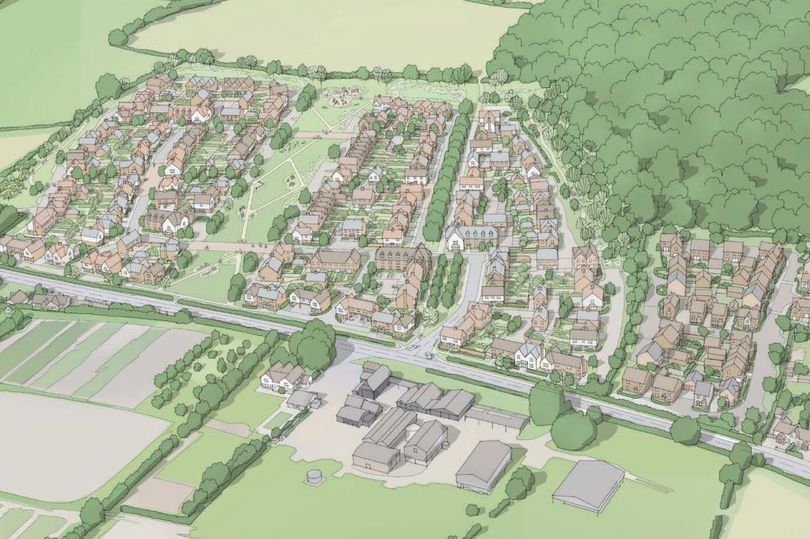New Housing Development Near Colchester Sparks Interest and Concern
Plans have been proposed for a new housing estate that would feature up to 250 homes, located west of Colchester, close to two historic buildings. The development is being led by developer James French, who has outlined his vision for land off Foxes Corner on Halstead Road in Aldham. This ambitious project includes a commitment to providing up to 30 per cent affordable housing, ensuring accessibility for a diverse range of residents. Additionally, each home will be equipped with an electric charging point, reflecting a growing emphasis on sustainability and modern living.
The area surrounding the proposed development is rich in history, with two Grade II listed buildings nearby. These include Fiddler’s Farmhouse to the north-east and Mantills Farmhouse to the south-west. The presence of these heritage sites adds a layer of complexity to the development, as any new construction must carefully consider its impact on the local landscape and cultural heritage.
In addition to the housing units, the plans also include infrastructure improvements. The developer aims to construct a new junction and enhance the footway along Halstead Road. This will involve the installation of a pedestrian crossing and two new bus stops, aiming to improve connectivity and accessibility for residents and visitors alike. These additions are intended to support the broader goal of creating a more integrated and community-focused environment.
The development’s vision is clearly outlined in the proposal, which states: “Our vision for the Land North of Halstead Road is to create a sustainable, thoughtfully designed development that blends seamlessly with its surroundings while offering innovative, high-quality homes. The project will enhance connections to the wider area through improved pedestrian paths and safe walking and cycling routes, fostering greater community engagement.”
This approach highlights a focus on both environmental responsibility and social cohesion. The plan emphasizes the importance of preserving and enhancing local wildlife, incorporating a publicly accessible green space that serves multiple purposes. This green area is expected to contribute to biodiversity while also providing recreational opportunities for residents, reinforcing the idea of a healthy and connected community.
The proposal also outlines a network of routes and linkages designed to ensure safe connections for pedestrians and cyclists. These pathways are intended to connect with the wider network, promoting active travel and reducing reliance on vehicles. By prioritizing walkability and bikeability, the development aims to foster a more sustainable lifestyle for future residents.
However, such developments often raise concerns among local communities. While the project promises benefits like increased housing options and improved infrastructure, there are also fears about potential impacts on the existing character of the area. Local residents may worry about changes to their environment, increased traffic, or the loss of open spaces. These concerns underscore the need for ongoing dialogue between developers, local authorities, and the community to ensure that the development meets the needs of all stakeholders.
As the planning process moves forward, it will be essential to balance the goals of growth and sustainability with the preservation of the unique qualities that make the area special. The success of this project will depend on how well it integrates with the surrounding landscape, respects historical sites, and addresses the concerns of those who call the area home.







